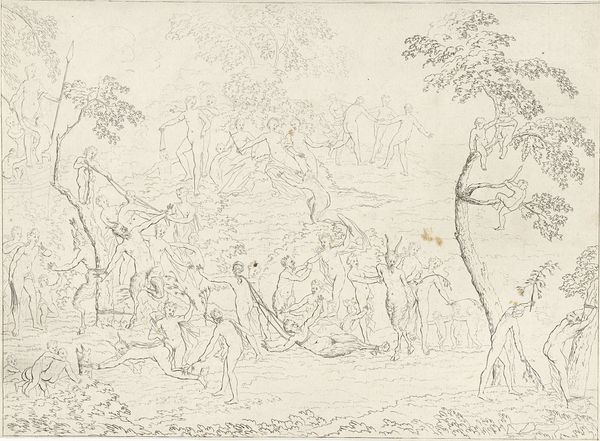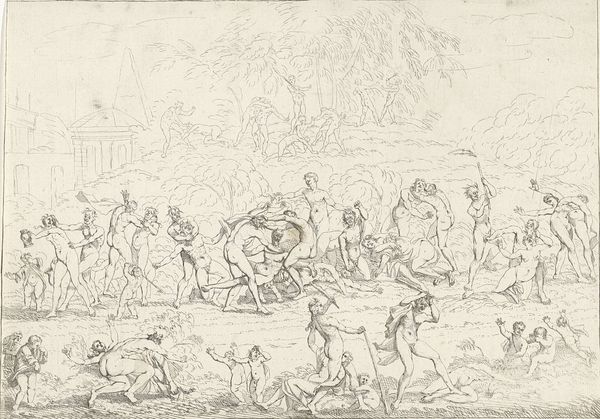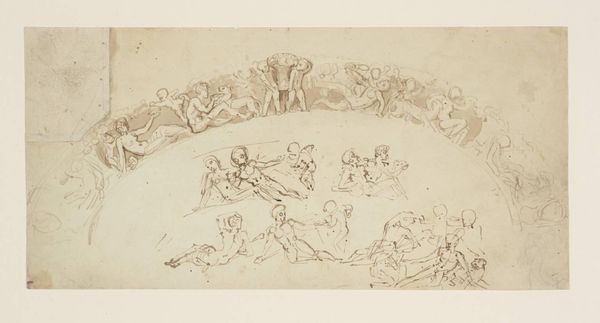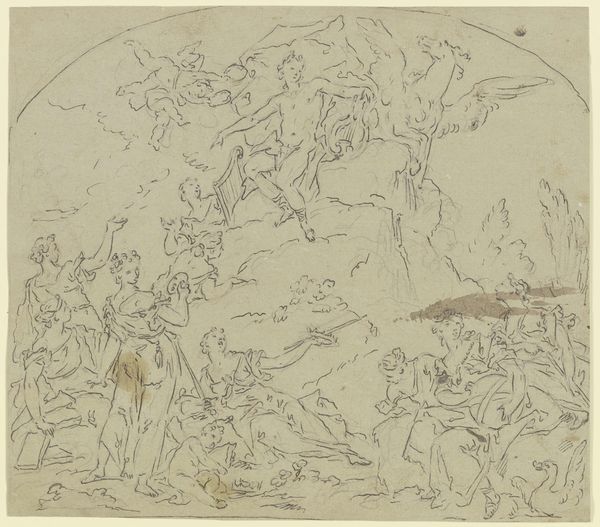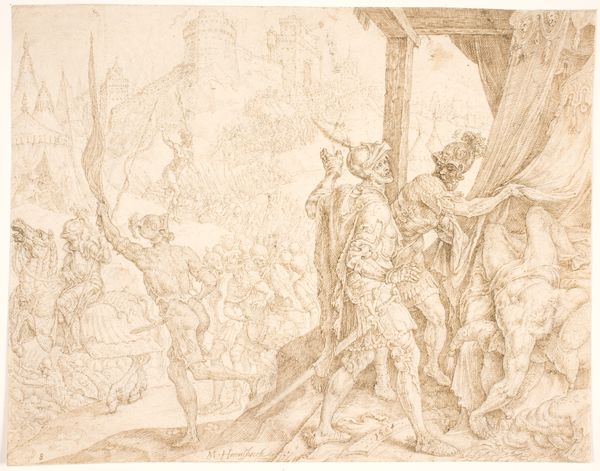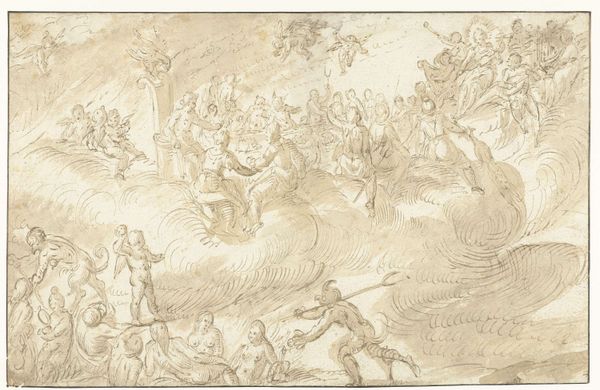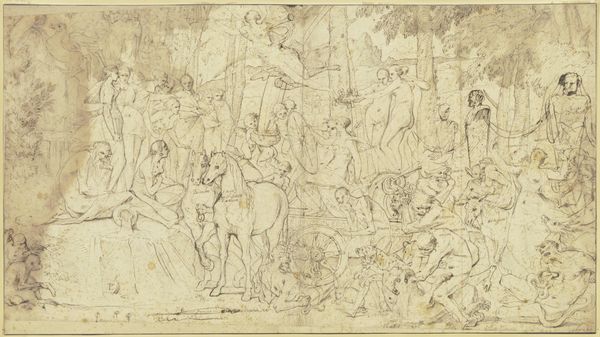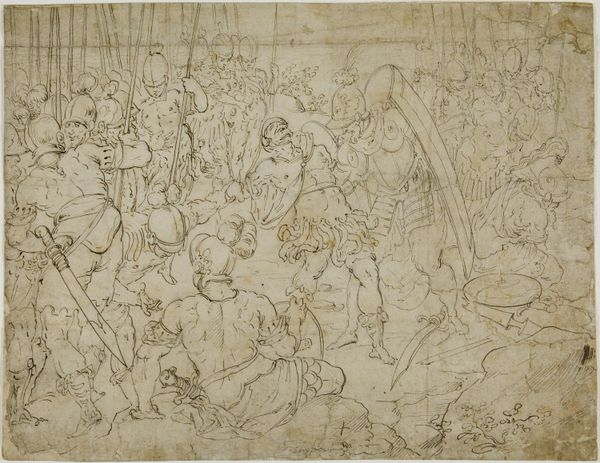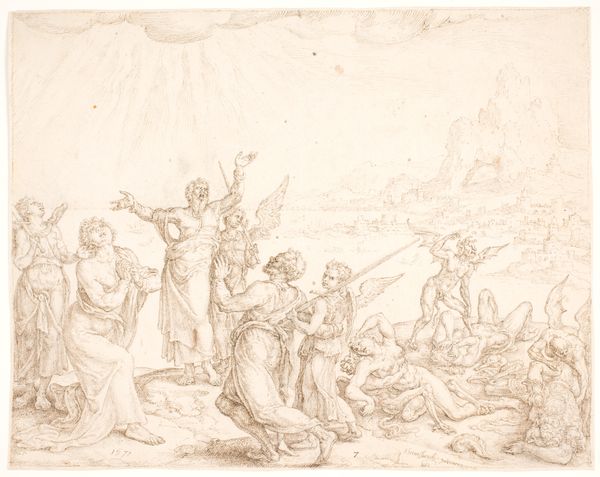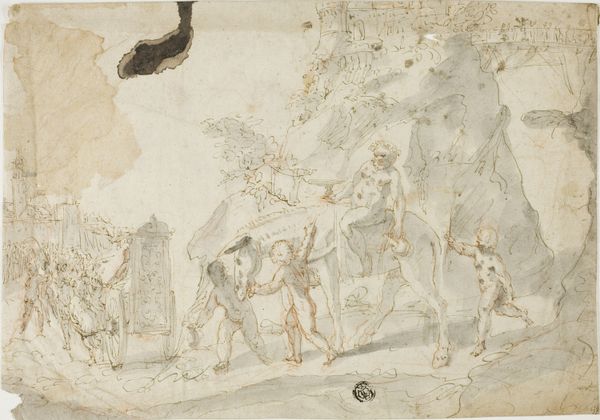
etching
#
allegory
#
baroque
#
etching
#
landscape
#
etching
#
figuration
Dimensions: height 198 mm, width 275 mm
Copyright: Rijks Museum: Open Domain
Editor: We're looking at "Bacchanten met satermaskers," an etching made around 1725 by Gerard Melder. There's this ethereal, almost dreamlike quality to it, created by the stark lines against the blank page. What strikes you about this piece? Curator: What immediately draws my attention is the artist's process, using etching to depict bacchanalia. Consider the social context: why choose a relatively accessible print medium, etching, to depict such a scene of aristocratic leisure and mythical abandon? It makes me wonder about the intended audience and how it might democratize images of opulence. Editor: So, the choice of etching itself is a statement? I hadn't thought about the material implying something deeper than just the aesthetic. Curator: Precisely. Etching, while requiring skill, was far more easily reproducible than, say, an oil painting. Did this accessibility perhaps reflect a broader shift in the consumption of art among different social strata? How would you say the landscape elements add or detract from the commentary on consumption? Editor: That’s fascinating. The landscape, with its detailed yet sparse depiction, almost feels like a stage set, highlighting the performative aspect of this 'bacchanal' as a crafted event. It adds to the thought that even supposed abandon has its framework. Curator: Exactly! It’s this interplay between material accessibility through etching and the representation of an elite subject that provides much to consider when questioning Baroque ideals and consumption in the art market of the time. I am now wondering if the material was readily available as well, which might mean a lot given the political turmoil occurring in other European regions at that time. Editor: This conversation has completely shifted my perception, viewing it now through the lens of materials, processes, and intended audiences. It adds such complexity! Curator: Indeed! Considering the materials and context encourages a richer understanding of art’s place within a society, challenging established hierarchies.
Comments
No comments
Be the first to comment and join the conversation on the ultimate creative platform.

